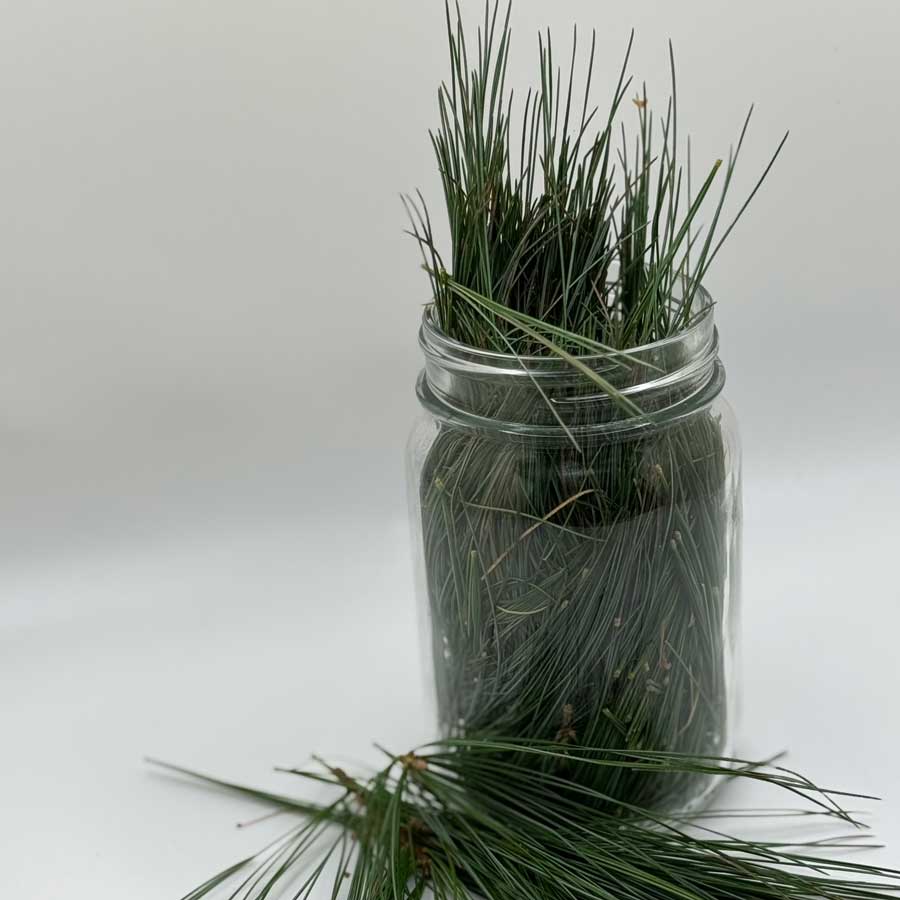
Infused Oils: Methods, Botanicals & Carrier Oils
Share
There’s something deeply satisfying about capturing the essence of herbs, flowers, and needles in oil. Infusing oils is both an old-world craft and a modern creative process, a way to preserve the character of botanicals and transform them into versatile ingredients for skincare, wellness rituals, or everyday use.
In this post, I’ll walk you through the journey—from growing and gathering to dehydrating and infusing—and share why I chose specific oils as carriers.
Growing and Gathering Botanicals
Infusions start long before the jar is filled. Cultivating or foraging herbs and needles connects you to the source. Each plant brings its own character: chamomile with its gentle floral notes, cornflower with its vibrant color, or pine needles with their grounding, woodsy aroma.
Collecting at the right time is key. Herbs are best picked fresh in their peak season, while needles and woody botanicals often hold their fragrance year-round. By harvesting thoughtfully, you ensure both potency and sustainability.
The Dehydration Step
Fresh plant material contains water, and water can shorten the shelf life of infused oils. Dehydrating botanicals is a simple but crucial step. I use different methods depending on the plant:
-
Air drying for delicate blossoms like chamomile.
-
Dehydrator trays for sturdier petals, like cornflower, to preserve their vibrant color.
-
Low-heat drying for resinous materials like pine, which hold their shape and fragrance even after a gentle warm-up.
Dehydration not only helps preserve the plants but also ensures the final oil remains stable and long-lasting.
Infusion Methods
There’s no single “right” way to infuse oils—each method brings out different qualities:
-
Solar Infusion: Placing botanicals in oil and letting them bask in the sun’s warmth over weeks. It’s slow, natural, and ideal for herbs like chamomile.
-
Sous Vide Infusion: Controlled low heat in a water bath, speeding up the process while keeping delicate compounds intact. This method works beautifully for pine needles.
-
Warm Infusion (Dehydrator or Double Boiler): Gentle, steady warmth that encourages botanicals to release their essence without overcooking. I often use this for petals.
Each method reflects not just technique, but intention—whether you want the slow patience of sun infusion or the precision of sous vide.
Choosing the Carrier Oils
The carrier oil is just as important as the herb:
-
Jojoba Oil: Lightweight, non-greasy, and closely matches our skin’s natural balance. I love it for chamomile infusions.
-
Fractionated Coconut Oil (MCT): Stable and long-lasting, with a smooth glide. Perfect for pine needle infusions.
-
Sunflower Oil: Gentle and nourishing, making it a versatile choice for flower-based infusions.
The choice depends on the intended use—whether for skincare, massage blends, or simply as a base for future projects.
Why Infuse?
Infusing oils is about more than fragrance or color. It’s a way to preserve a season, capture a place, and craft something uniquely your own. Every bottle tells a story: the sunlight on chamomile blooms, the careful harvesting and drying of cornflower petals, the grounding scent of pine gathered from the forest.
It’s slow craft, made tangible.
✨ Coming Soon: These small-batch infusions will be part of Fyrn’s skincare offerings, crafted with clean, mammal-free ingredients and rooted in the ritual of nature.
